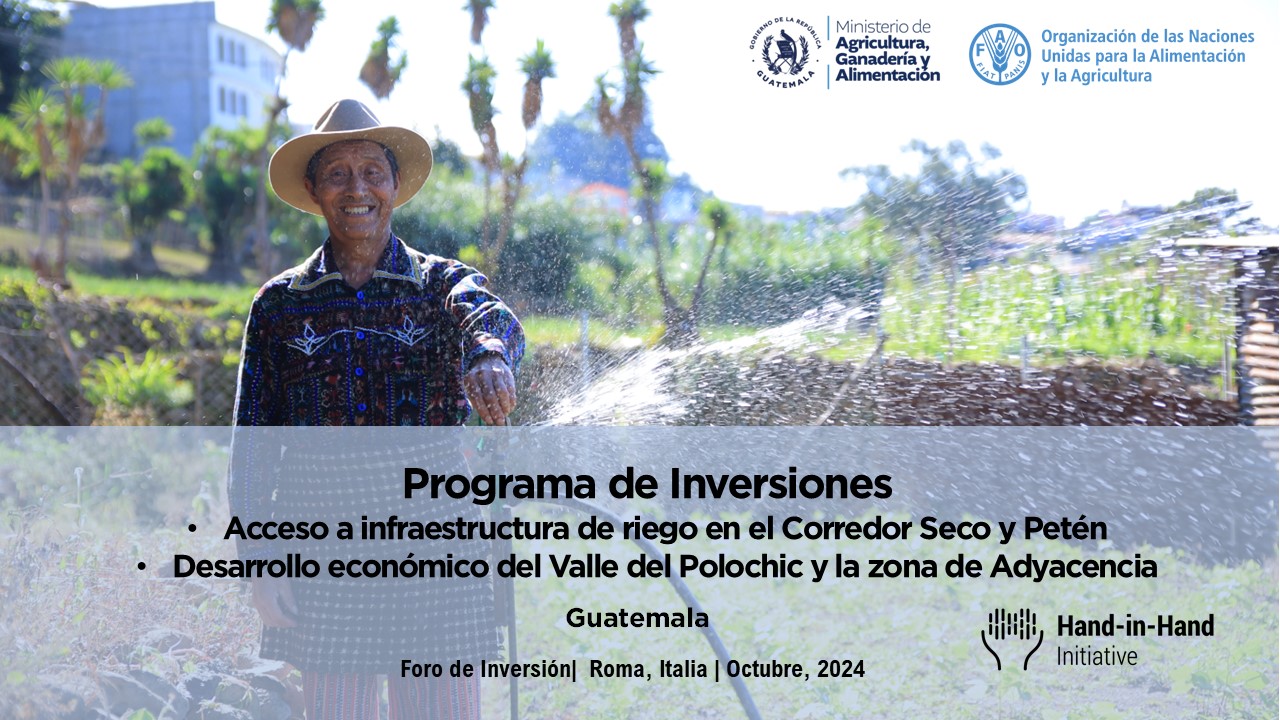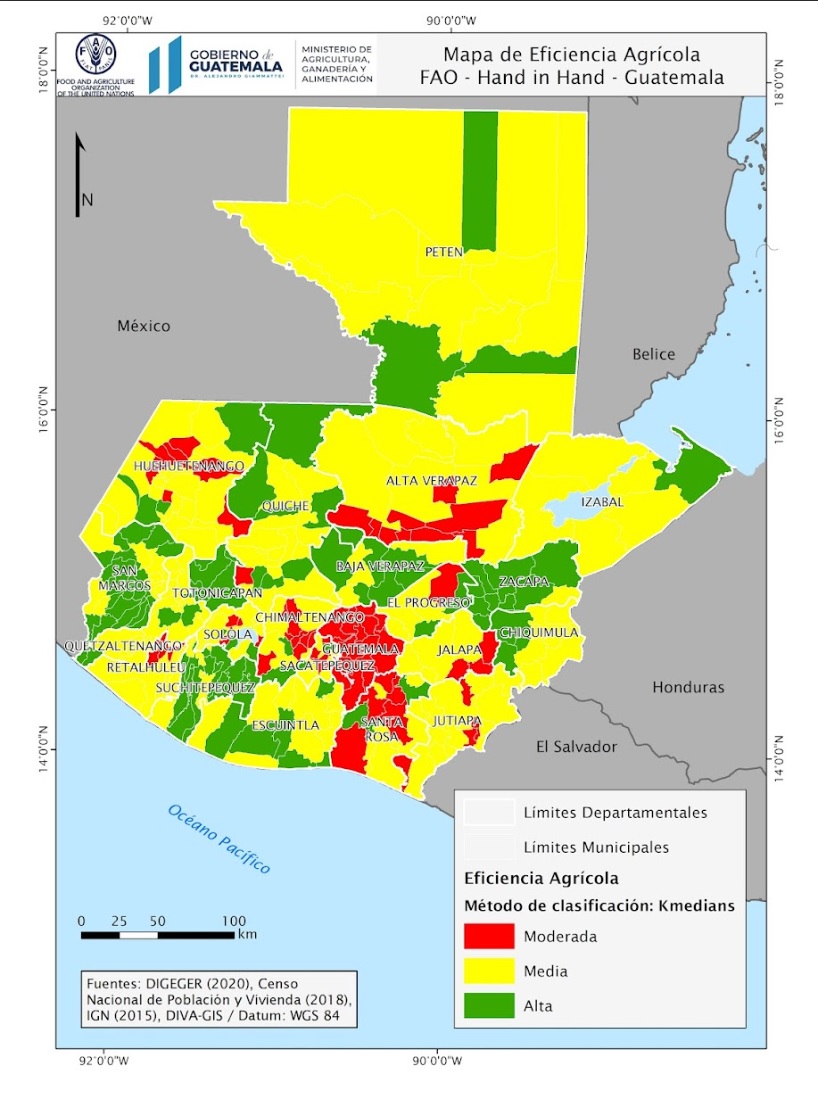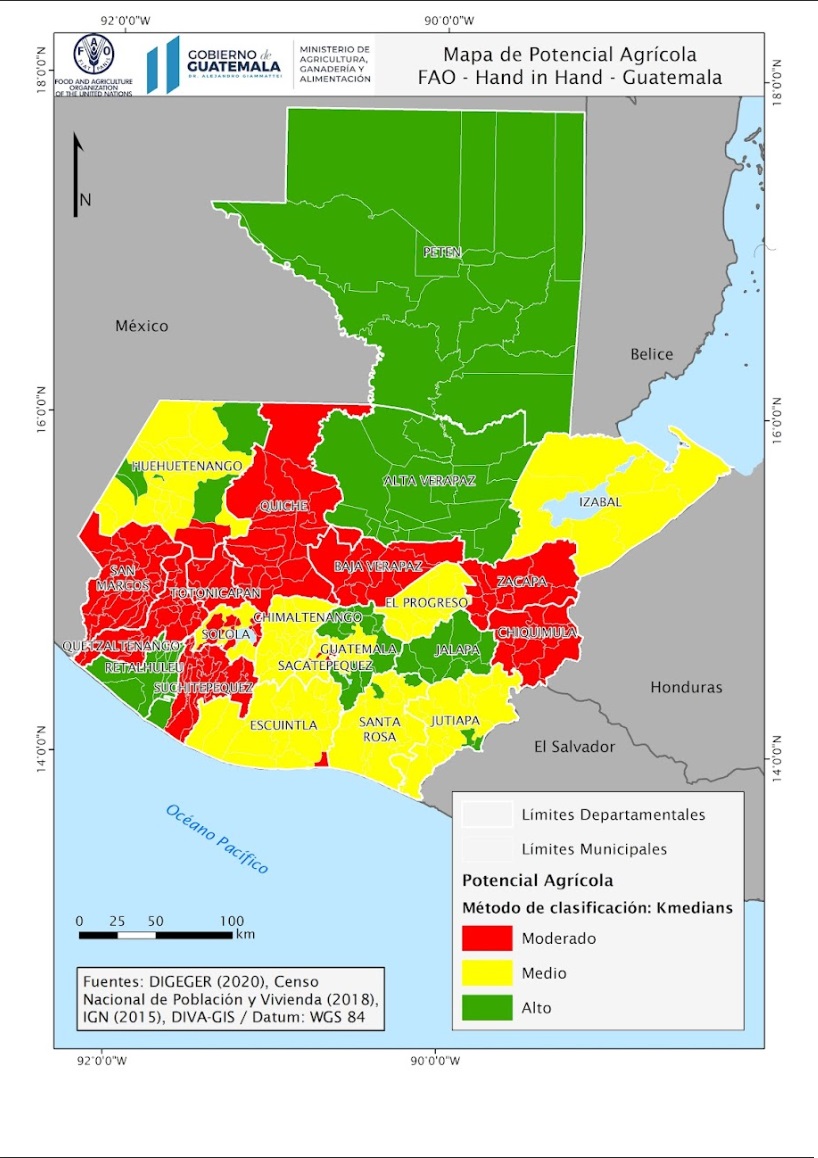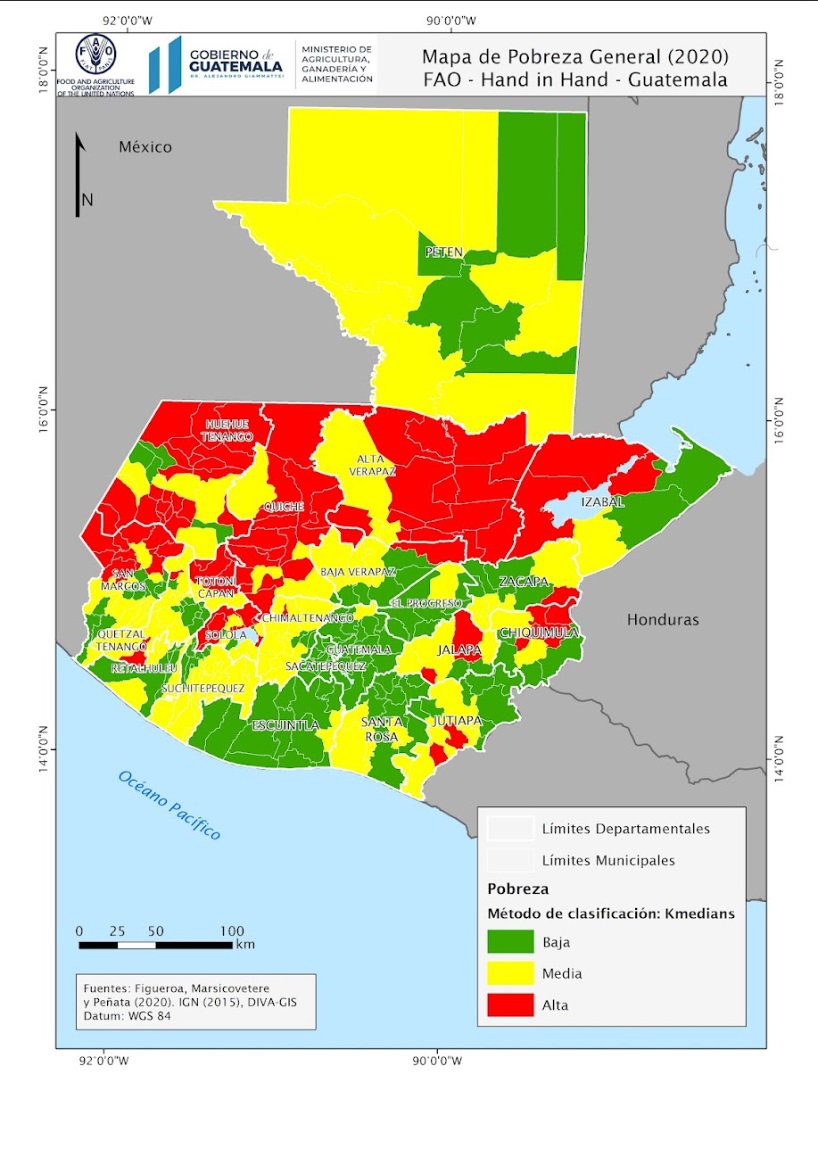Guatemala Investment Proposal

The Proposal
A participating country since 2022, the Hand-in-Hand (HiH) Initiative in Guatemala has been incorporated into the public investment system and, as such, now focuses on advancing two presidential priorities: expanding access to irrigation infrastructure under the National Irrigation Plan (Investment Note for the 2024 Investment Forum) and the Presidential Planning Secretariat (SEGEPLAN) in designing one of the most important programs launched by the current new government, "Avenues for Good Living Program."
Additionally, HiH has been included as a tool to prioritize public investments within the Strategic Guidelines of the Ministry of Agriculture, Livestock, and Food (MAGA) from 2024 to 2028.
Another key aspect of Guatemala's proposal is the consolidation and strengthening of the Investment Program for Agricultural Economic Development in the Adjacency Zone and Polochic Valley (2022-2026), which was developed during the first years of the country's implementation of HiH. This program focuses on prioritizing investments for the value chains of cocoa, cardamom, and coffee, and an updated version will also be presented at this year's Investment Forum.
The program seeks to ensure that producers in poverty can benefit from the intervention, thus improving their productivity, incomes, associative culture, and ecosystem vision, diversifying their economic activities, and including groups with higher vulnerability such as women, youth, and indigenous people.
In total, Guatemala's investment proposals at this year's investment forum cost USD 163.8 million. The national government is contributing USD 36.3 million, and other stakeholders have committed USD 11 million. This leaves an investment gap of USD 116.5 million, for which external investments are sought. These investments have an estimated internal rate of return (IRR) of 20%, and a total net present value (NPV) USD 37.2 million. Altogether, the interventions will directly benefit 19,315 people, and indirectly benefit another 100,075 people. Lastly, their implementation will contribute to a reduction in CO2 emissions of 156,902 tons per year.
-(1).jpg?sfvrsn=76415870_1)
-(1).jpg?sfvrsn=7e6cdfa0_1)
Total Investment | 70.9 Million USD |
IRR Value | 21.0% |
NPV Value | 49.8 Million USD |
Direct Beneficiaries | 1,815 |
Indirect Beneficiaries | 9,075 |
Total Beneficiaries | 10,890 |
Per capita income increase | 10,064 USD/year |
ExACT TOOL | 0 |
Total Investment | 92.9 Million USD |
IRR Value | 19.0% |
NPV Value | 24.5 Million USD |
Direct Beneficiaries | 17,500 |
Indirect Beneficiaries | 91,000 |
Total Beneficiaries | 108,500 |
Per capita income increase | 1,997 USD/year |
ExACT TOOL | 0 |
Guatemala Typologies
Poverty
Potential
Efficiency
Click on individual maps to get detailed view on FAO GIS platform
Agro-informatics connects information technology with the management, analysis and application of agricultural data to design more accurate and targeted agricultural interventions. The use of new technologies and techniques in agriculture, such as satellite imagery, remote sensing, and geographic information systems, enable the transformation of data into actionable information.
Government of Guatemala: Investment cases in the Guatemala
Guatemala Investment Cases and Interventions
| Infrastructure plan70.9 Million USD10,890 Beneficiaries |
Irrigation Investment Plan
The Government of Guatemala presented the National Irrigation Policy 2024-2033 to gradually and sustainably reduce dependence on the seasonal rainfall cycle and to increase productivity levels and incomes of rural households. The policy includes the Investment Plan 2024-2027 to promote strategic public and private investments.
The 2024-2027 Investment Plan prioritizes productive infrastructure in the Dry Corridor and Petén. This includes the implementation of both short and long pipe connection infrastructure across a target area of 6,905 productive hectares. These actions will benefit small producers and their organizations, and micro and small enterprises to use water resources more efficiently and achieve two or three production cycles per year, which will improve their economic incomes and living conditions. Further interventions will support institutional management of irrigation systems (including through strategies such as strengthening legislation on land tenure and water access), and the design of complementary pre-investment projects.
The 2024-2027 Plan estimates an investment of USD 70.9 million to irrigate productive land in the Dry Corridor and Petén. The economic return of incorporating mechanized and stable irrigation systems in vegetable and fruit production will result in an average increase in annual per capita income of USD 10,064. This investment's IRR is estimated to be 21% and it's NPV is expected to be USD 49.8 million. In total 10,890 people will benefit directly and indirectly from these interventions.
| Economic development92.9 Million USD108,500 Beneficiaries |
Investment Program for the Polochic Valley and Adjacency Zone
The program promotes an inclusive approach through growth driven by small-scale agriculture and increased participation of the rural population in agricultural value chains. The program focuses on the value chains of coffee, cocoa, and cardamom. It aims to benefit 17,500 rural households, with a total of 91,000 indirect beneficiaries, including 39,000 women and 23,400 young people. The potential agricultural area targeted is estimated at 15,420 hectares.
The program comprises four components: inclusive and resilient productive promotion; agro-industrial development and commercialization; infrastructure and related services; and green transformation. The first component will engender the restoration and creation of agroforestry systems to boost the climate resilience of plantations and diversify producer incomes. Second, 50 value-addition facilities will be implemented, to lower the cost of primary processing across the target value chains. Next, enabling infrastructure will be implemented and rehabilitated, including 634 kilometers of rural roads and 88 kilometers of energy transmission and distribution lines. Finally, 700 hectares of energy and riverbank forestry will be created, promoting the sustainability of natural resources and propagating a cross-sectoral green transformation. The overall cost of the set of investments programmed for broad agro-productive development is estimated at USD 92.9 million, presenting an overall IRR of 19%, and an overall NPV of approximately USD 24.5 million. 108,500 people will benefit directly and indirectly from these interventions, which are expected to increase yearly per capita incomes by USD 1,997.

Advancing public investment in agriculture to reduce rural poverty and end hunger: key developments in Guatemala under the Hand-in-Hand InitiativeEnhancing the public investment system stands as a top priority for the Government of Guatemala, driving forward its vision for sustainable growth and national development. To this end, the General Secretariat of Planning and Programming of the Presidency (SEGEPLAN), through the Pre-Investment Directorate, has made significant strides in strengthening public investment in agriculture Read more... | .jpg?sfvrsn=a232e8ac_1) | ||||
.jpg?sfvrsn=ec13ec36_1)






e232480b-fc75-4e38-8e7c-56e918d083c2.jpg?sfvrsn=a47c1c3d_1)
817f075f-5ae3-4e69-ae7b-81a51c6df9d8.jpg?sfvrsn=5de96159_1)